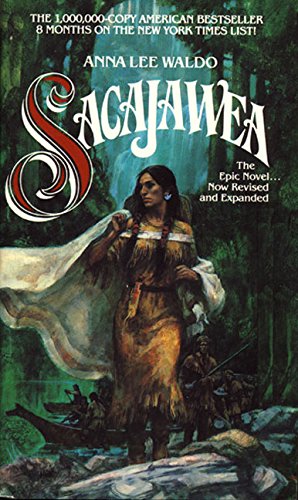About this item
Clad in a doeskin, alone and unafraid, she stood straight and proud before the onrushing forces of America's destiny: Sacajawea, child of a Shoshoni chief, lone woman on Lewis and Clark's historic trek -- beautiful spear of a dying nation.She knew many men, walked many miles. From the whispering prairies, across the Great Divide to the crystal capped Rockies and on to the emerald promise of the Pacific Northwest, her story over flows with emotion and action ripped from the bursting fabric of a raw new land.Ten years in the writing, SACAJAWEA unfolds an immense canvas of people and events, and captures the eternal longings of a woman who always yearned for one great passion -- and always it lay beyond the next mountain.
About the Author
Anna Lee Waldo
I was born in Great Falls, Montana and lived in Whitefish. In high school I showed a talent for science and was awarded the Bausch and Lomb Science Award. I majored in chemistry at Montana State, Bozeman and during graduation I was given the Richardson Award for women's excellence in science. I earned my Master's Degree in Organic Chemistry at the University of Maryland, College Park, where I did research under a U.S. Naval Scholarship. After graduation I married a fellow chemist. We had five children and each child was given a Chinook Indian name. This was not unusual for a Montanan, although Bill, my husband thought so; he was from Maryland. I explained that many things had Indian names in Western Montana and those things that were most valuable were given a name that was fitting and appropriate as a gift. For instance our first-born, Judy, was called Skookumchuck, meaning Something Good. Sally, was called Polliwog because she was always wiggly. She became a ballet dancer. Dale, hypersensitive as a small child, was named Williwaw, Storm. Patty was named Kloochman, meaning Little Woman, because she wanted to be older, like her sisters. Rick, the youngest, was named Hee Hee Tum Tum, Happy Heart. He was the one with a smile and sunny disposition. At the University of Dayton, in Ohio, I taught organic chemistry and biochemistry. I wrote regularly for Chemical Abstracts Service, Columbus, Ohio and worked for Monsanto. I published numerous technical papers, most of which were written while doing biochemical research at Miami Valley Hospital in Dayton. Later we moved and I taught chemistry at St. Louis Community College-Meremac, Kirkwood, Missouri and biochemistry for nursing students attending St. John's Mercy College. When my husband, Bill, also a chemist, retired we moved to San Luis Obispo, California where I taught chemistry at Cal Poly and joined the local historical society. When I was in high school, I thought everyone ought to study American history and become thoroughly acquainted with some chosen segment in order to appreciate our heritage. I began to study the Lewis and Clark Expedition. My concern for this Expedition and my awareness of the importance of St. Louis as the gateway to the West was emphasized when we moved to St. Louis, Missouri. I began to wonder where Sacajawea really came from and where did she go after the Expedition what happened to her first-born son nicknamed Pomp by members of the Lewis and Clark Expedition. I did ten years of research and my husband and I and our five children traveled the Lewis and Clark trail by automobile three times for summer vacations. We stopped at all the Indian reservations, universities and libraries and museums for information about the Shoshoni woman who went with the Expedition halfway across our continent on foot and by canoe. During the winters I took college courses in American Indian anthropology and archaeology and I went on digs in a satellit
Report incorrect product information.


